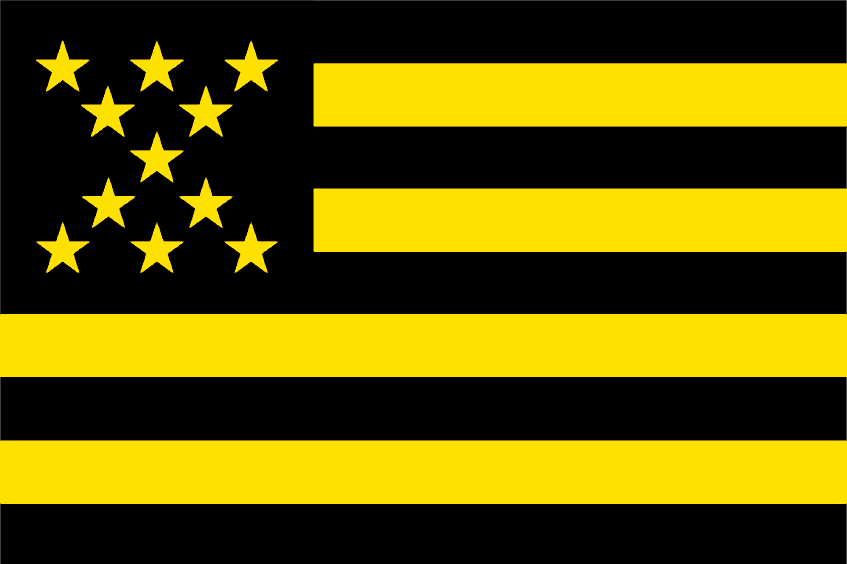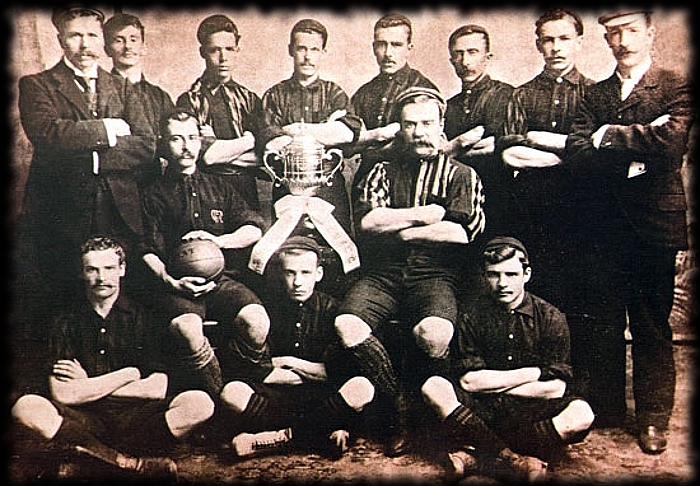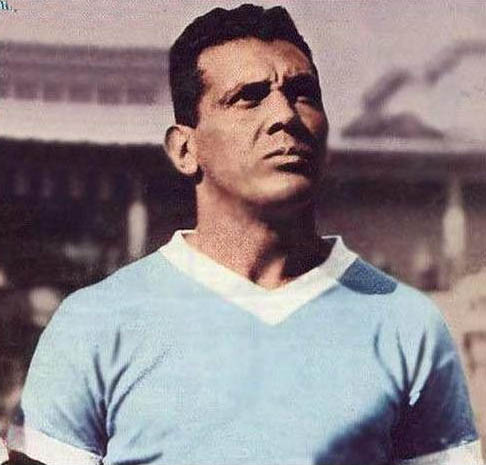|
1932 Uruguayan Primera División
The Uruguayan Championship 1932 was the 29th season of Uruguay's top-flight football league. Overview The tournament consisted of a two-wheel championship of all against all. It involved fourteen teams, and the champion was Peñarol. Teams League standings References Uruguay – List of final tables (RSSSF) {{DEFAULTSORT:1932 Uruguayan Primera Division Uruguayan Primera División seasons Uru Uru or URU may refer to: Language * Uru dialect of Central Kilimanjaro, a Bantu language of Tanzania * Uru language, the extinct language of the Uros, an Amerindian people * Uru of Ch'imu, an extinct language of the Uros, an Amerindian people ... 1932 in Uruguayan football ... [...More Info...] [...Related Items...] OR: [Wikipedia] [Google] [Baidu] |
Uruguayan Primera División
The Liga Profesional de Primera División (American Spanish , en, First Division Professional League, local: , ''First Division''), named "Torneo Uruguayo Copa Coca-Cola" for sponsorship reasons, is the highest professional Association football, football league in Uruguay and organized by the Uruguayan Football Association (AUF). The first championship was held in 1900 Uruguayan Primera División season, 1900, being an amateur competition until 1932 Uruguayan Primera División, 1932 when the league became professional. From 1900 to the 2014–15 season there have been 111 first division seasons. In 2011, the Uruguayan Primera División was regarded as the 23rd most difficult football league in the 21st century by the International Federation of Football History & Statistics (IFFHS). If considered the same club, Peñarol/Central Uruguay Railway Cricket Club, CURCC is the most successful Uruguayan club with 51 titles. Otherwise, it is Club Nacional de Football, Nacional with 49 ti ... [...More Info...] [...Related Items...] OR: [Wikipedia] [Google] [Baidu] |
Central Uruguay Railway Cricket Club
Central Uruguay Railway Cricket Club (mostly known for its acronym CURCC) was a Uruguayan sports club, originally established by British railway workers for the practise of cricket. Nevertheless, the club would be notable for its football section, considered one of the greatest contributors to that sport in Uruguay. In fact, CURCC was one of founding members of Uruguayan Football Association (AUF) in 1900.Historia de la Asociación on AUF website The continuity between the CURCC's football section and club generated a controversy that remains nowadays."C.U.R.C.C. versus Club A. Patria", chronicle on ''La Razón'', 23 Jul 1914 (page 6) History Railway ...
|
Montevideo Wanderers Fútbol Club
Montevideo Wanderers Fútbol Club, usually known simply as Wanderers, is a Uruguayan professional football club based in Montevideo. The club are currently members of the Primera División and play at the Estadio Viera. Beside football, the club also has teams playing basketball, volleyball, athletics, futsal, pool and pelota. History Origin 1898 - 1931 The Montevideo Wanderers was founded in the end of the 19th century, made up of a group of idealistic young people who wanted to express their sporting principles in a club where they were truly the protagonists of their own decisions. Led by the Sardeson brothers, the community quickly became a well-known group in their neighborhood of origin, El Prado. Its name was born as a result of a trip by Enrique Sardeson and Juan Sardeson to England. In England at that time The Wanderers were a prominent team, although it was not the only Club with that name playing in the English tournament, since it coexisted with Wolverhampto ... [...More Info...] [...Related Items...] OR: [Wikipedia] [Google] [Baidu] |
Estadio Belvedere
Estadio Belvedere is a multi-use stadium in Montevideo, Uruguay. It is currently used primarily for football matches. The stadium holds 10,000 people and was built in 1909. On August 15, 1910, in a game at Estadio Belvedere, the Uruguay national football team wore their signature light blue jerseys for the first time. The game ended in a 3–1 victory over Argentina. It was also the first game that Argentina wore their signature blue and white striped jerseys. The Estadio, formerly owned by the Montevideo Wanderers, now belongs to Liverpool FC of Montevideo. References External links Estadio Belvedere Belvedere Belvedere Belvedere (from Italian, meaning "beautiful sight") may refer to: Places Australia *Belvedere, Queensland, a locality in the Cassowary Coast Region Africa * Belvedere (Casablanca), a neighborhood in Casablanca, Morocco *Belvedere, Harare, Zi ... B Liverpool F.C. (Montevideo) Belvedere, Montevideo {{Uruguay-sports-venue-stub ... [...More Info...] [...Related Items...] OR: [Wikipedia] [Google] [Baidu] |
Montevideo Wanderers
Montevideo Wanderers Fútbol Club, usually known simply as Wanderers, is a Uruguayan professional football club based in Montevideo. The club are currently members of the Primera División and play at the Estadio Viera. Beside football, the club also has teams playing basketball, volleyball, athletics, futsal, pool and pelota. History Origin 1898 - 1931 The Montevideo Wanderers was founded in the end of the 19th century, made up of a group of idealistic young people who wanted to express their sporting principles in a club where they were truly the protagonists of their own decisions. Led by the Sardeson brothers, the community quickly became a well-known group in their neighborhood of origin, El Prado. Its name was born as a result of a trip by Enrique Sardeson and Juan Sardeson to England. In England at that time The Wanderers were a prominent team, although it was not the only Club with that name playing in the English tournament, since it coexisted with Wolverhampton ... [...More Info...] [...Related Items...] OR: [Wikipedia] [Google] [Baidu] |
600px Bianco E Nero (Strisce)
6 (six) is the natural number following 5 and preceding 7. It is a composite number and the smallest perfect number. In mathematics Six is the smallest positive integer which is neither a square number nor a prime number; it is the second smallest composite number, behind 4; its proper divisors are , and . Since 6 equals the sum of its proper divisors, it is a perfect number; 6 is the smallest of the perfect numbers. It is also the smallest Granville number, or \mathcal-perfect number. As a perfect number: *6 is related to the Mersenne prime 3, since . (The next perfect number is 28.) *6 is the only even perfect number that is not the sum of successive odd cubes. *6 is the root of the 6-aliquot tree, and is itself the aliquot sum of only one other number; the square number, . Six is the only number that is both the sum and the product of three consecutive positive numbers. Unrelated to 6's being a perfect number, a Golomb ruler of length 6 is a "perfect ruler". Six is a con ... [...More Info...] [...Related Items...] OR: [Wikipedia] [Google] [Baidu] |
Club Atlético River Plate (Uruguay)
Club Atlético River Plate, commonly known as River Plate, is an Argentine professional sports club based in the Núñez neighborhood of Buenos Aires. Founded in 1901, the club is named after the English name for the city's estuary, Río de la Plata. Although many sports are practiced at the club, River Plate is best known for its professional football team, which has won Argentina's Primera División championship a record of 37 times, its latest title in 2021. Domestic achievements also include 14 national cups, with the 2021 Trofeo de Campeones as the most recent, making River Plate the country's most successful team in domestic competitions with a total of 51 top-division titles.Campeones – Primera División on AFA website, 6 July 2015 At international l ... [...More Info...] [...Related Items...] OR: [Wikipedia] [Google] [Baidu] |
600px Bianco E Rosso (Strisce)
6 (six) is the natural number following 5 and preceding 7. It is a composite number and the smallest perfect number. In mathematics Six is the smallest positive integer which is neither a square number nor a prime number; it is the second smallest composite number, behind 4; its proper divisors are , and . Since 6 equals the sum of its proper divisors, it is a perfect number; 6 is the smallest of the perfect numbers. It is also the smallest Granville number, or \mathcal-perfect number. As a perfect number: *6 is related to the Mersenne prime 3, since . (The next perfect number is 28.) *6 is the only even perfect number that is not the sum of successive odd cubes. *6 is the root of the 6-aliquot tree, and is itself the aliquot sum of only one other number; the square number, . Six is the only number that is both the sum and the product of three consecutive positive numbers. Unrelated to 6's being a perfect number, a Golomb ruler of length 6 is a "perfect ruler". Six is a con ... [...More Info...] [...Related Items...] OR: [Wikipedia] [Google] [Baidu] |
Estadio Olímpico De Montevideo
A stadium (plural, : stadiums or stadia) is a place or venue for (mostly) outdoor sports, concerts, or other events and consists of a field or stage either partly or completely surrounded by a tiered structure designed to allow spectators to stand or sit and view the event. Pausanias of Athens, Pausanias noted that for about half a century the only event at the ancient Greek Olympic festival was the race that comprised one length of the Stadion (unit), stadion at Olympia, Greece, Olympia, where the word "stadium" originated. Most of the stadiums with a capacity of at least 10,000 are used for association football. Other popular stadium sports include gridiron football, baseball, cricket, the various codes of Rugby football, rugby, field lacrosse, bandy, and bullfighting. Many large sports venues are also used for concerts. Etymology "Stadium" is the Latin form of the Greek word "Stadion (unit), stadion" (''στάδιον''), a measure of length equalling the length of 600 h ... [...More Info...] [...Related Items...] OR: [Wikipedia] [Google] [Baidu] |
Rampla Juniors Fútbol Club
Rampla Juniors Fútbol Club, commonly known as Rampla Juniors, is a Uruguayan football club based in Montevideo. The team was actively playing the 2021 season by January 2021. In their home stadium, Rampla won the Uruguayan championship in 1927. In 2019, the Rampla Juniors Fútbol Club had Estadio Olímpico, with 6,000 capacity, as its home stadium. Fans are nicknamed "The Flinstones," as they helped build the team's home stadium in the 1960s, which resembled a quarry. History Origin and colours Rampla Juniors were founded in the Aduana area (also the birthplace of River Plate FC), then moved first to the Aguada neighborhood, and finally, around 1920, to the Cerro neighborhood. Their colors are taken from Fortaleza, a club that existed in the early years of Rampla's stint in the Cerro area. Another story of how they chose their colors is similar to how Boca Juniors supposedly got the idea for their kit colors from a Swedish flag on a ship. It is rumored that Rampla's found ... [...More Info...] [...Related Items...] OR: [Wikipedia] [Google] [Baidu] |








